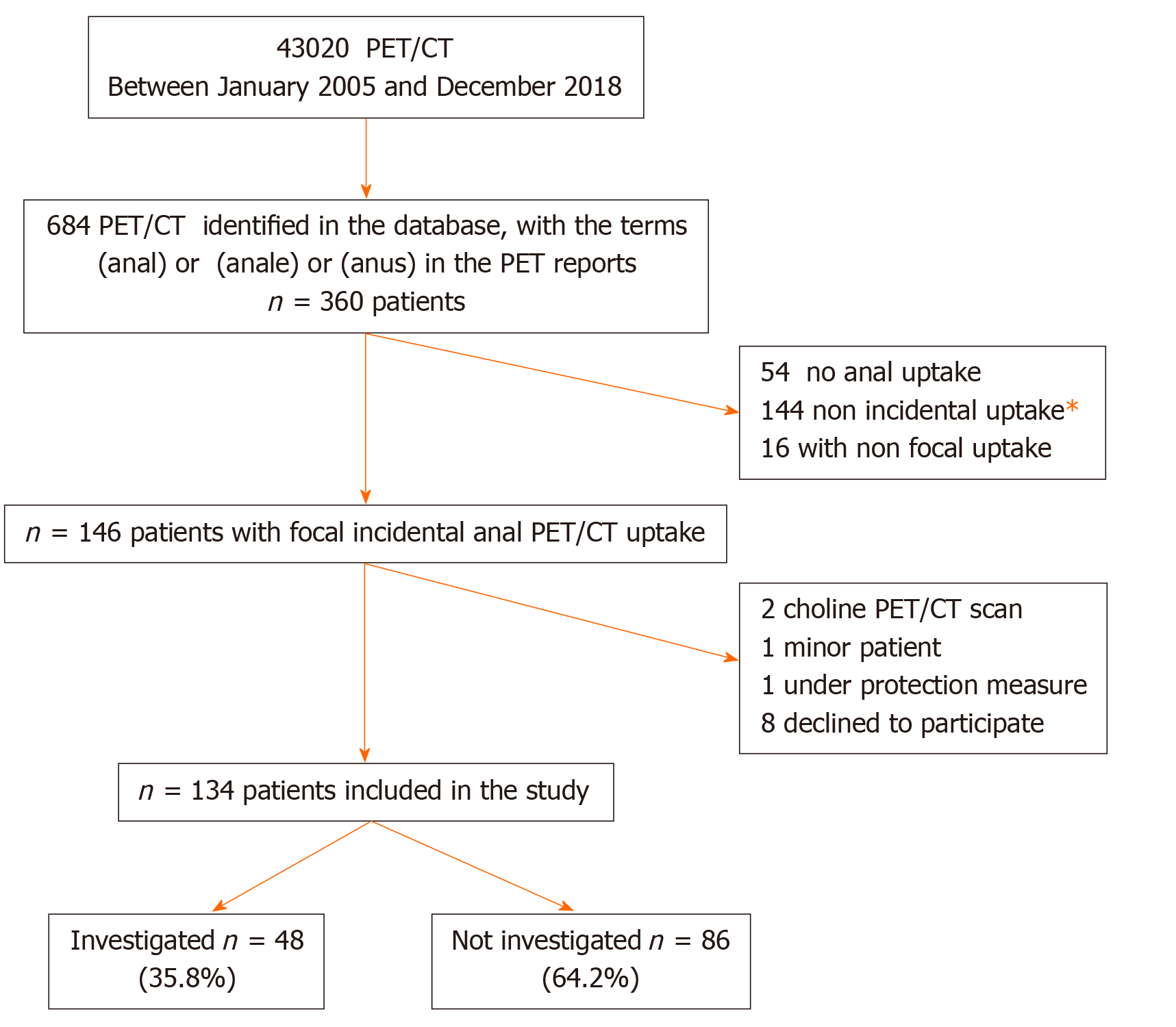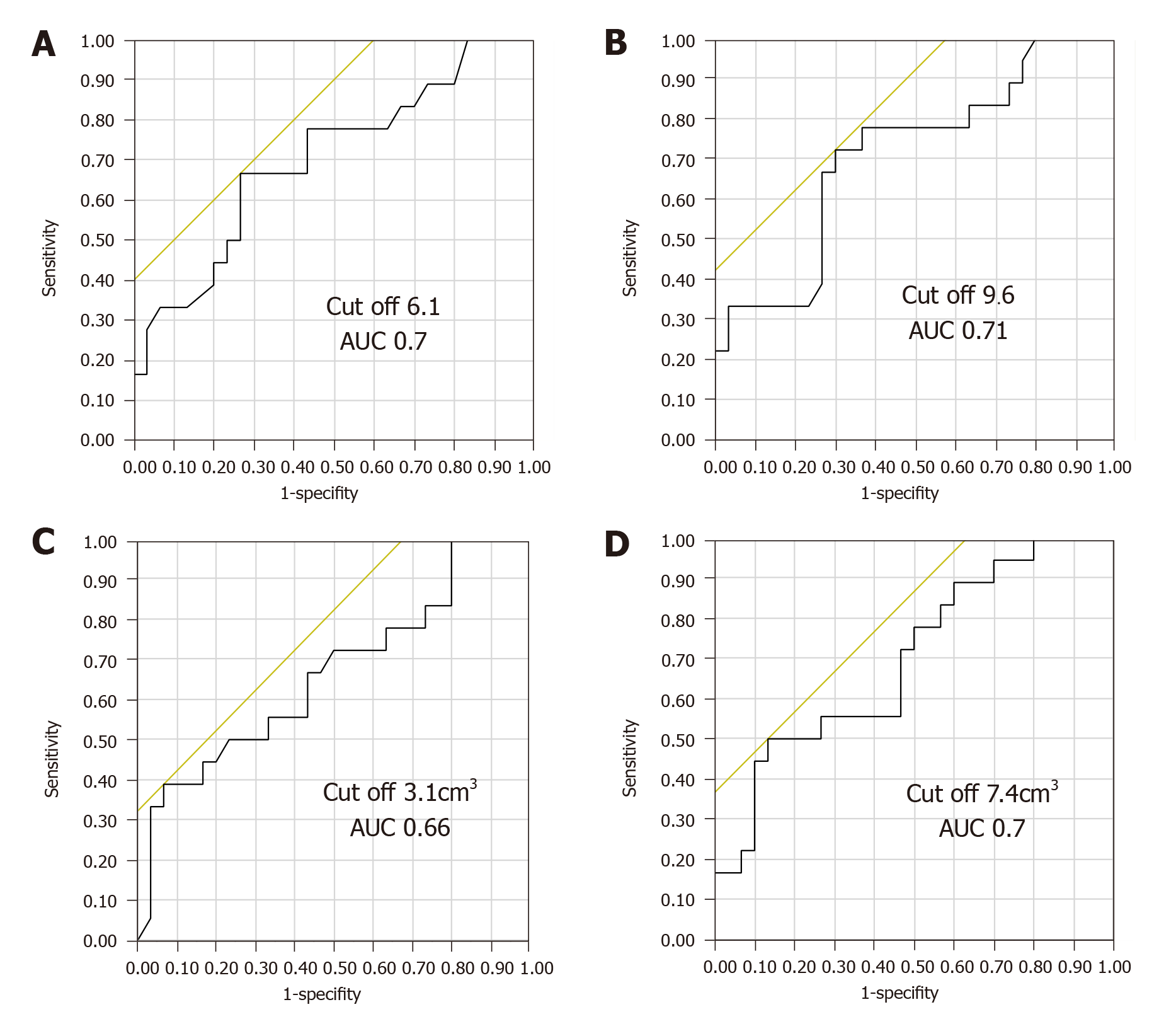Copyright
©The Author(s) 2020.
World J Clin Cases. Sep 6, 2020; 8(17): 3679-3690
Published online Sep 6, 2020. doi: 10.12998/wjcc.v8.i17.3679
Published online Sep 6, 2020. doi: 10.12998/wjcc.v8.i17.3679
Figure 1 Flow chart.
Among the 144 patients with non-incidental uptake, 121 had known anal cancer; 14 had pelvic cancer with known anal extension; 2 had a known abnormality on anorectal examination at the time of the positron emission tomography with computed tomography; 7 had recent pelvic radiotherapy or surgery. PET/CT: Positron emission tomography with computed tomography.
Figure 2 Incidental anal 18F-fluorodeoxyglucose uptake.
A: An incidental anal 18F-fluorodeoxyglucose uptake in 1 study patient with hemo rrhoidal disease that required medical treatment (standardized uptake value max = 18.1); B: An incidental anal 18F-fluorodeoxyglucose uptake in 1 study patient without proctological diagnosis (standardized uptake value max = 4.9); C: An incidental anal 18F-fluorodeoxyglucose uptake in 1 study patient with hemorrhoidal disease that did not require treatment (standardized uptake value max = 8.8).
Figure 3 Receiver operating characteristic curve.
A: Standardized uptake value mean; B: Standardized uptake value max; C: Metabolic volumes 41; D: Metabolic volumes 30, to differentiate patients requiring treatment from others. AUC: Area under the curve.
- Citation: Moussaddaq AS, Brochard C, Palard-Novello X, Garin E, Wallenhorst T, Le Balc’h E, Merlini L’heritier A, Grainville T, Siproudhis L, Lièvre A. Incidental anal 18fluorodeoxyglucose uptake: Should we further examine the patient? World J Clin Cases 2020; 8(17): 3679-3690
- URL: https://www.wjgnet.com/2307-8960/full/v8/i17/3679.htm
- DOI: https://dx.doi.org/10.12998/wjcc.v8.i17.3679















